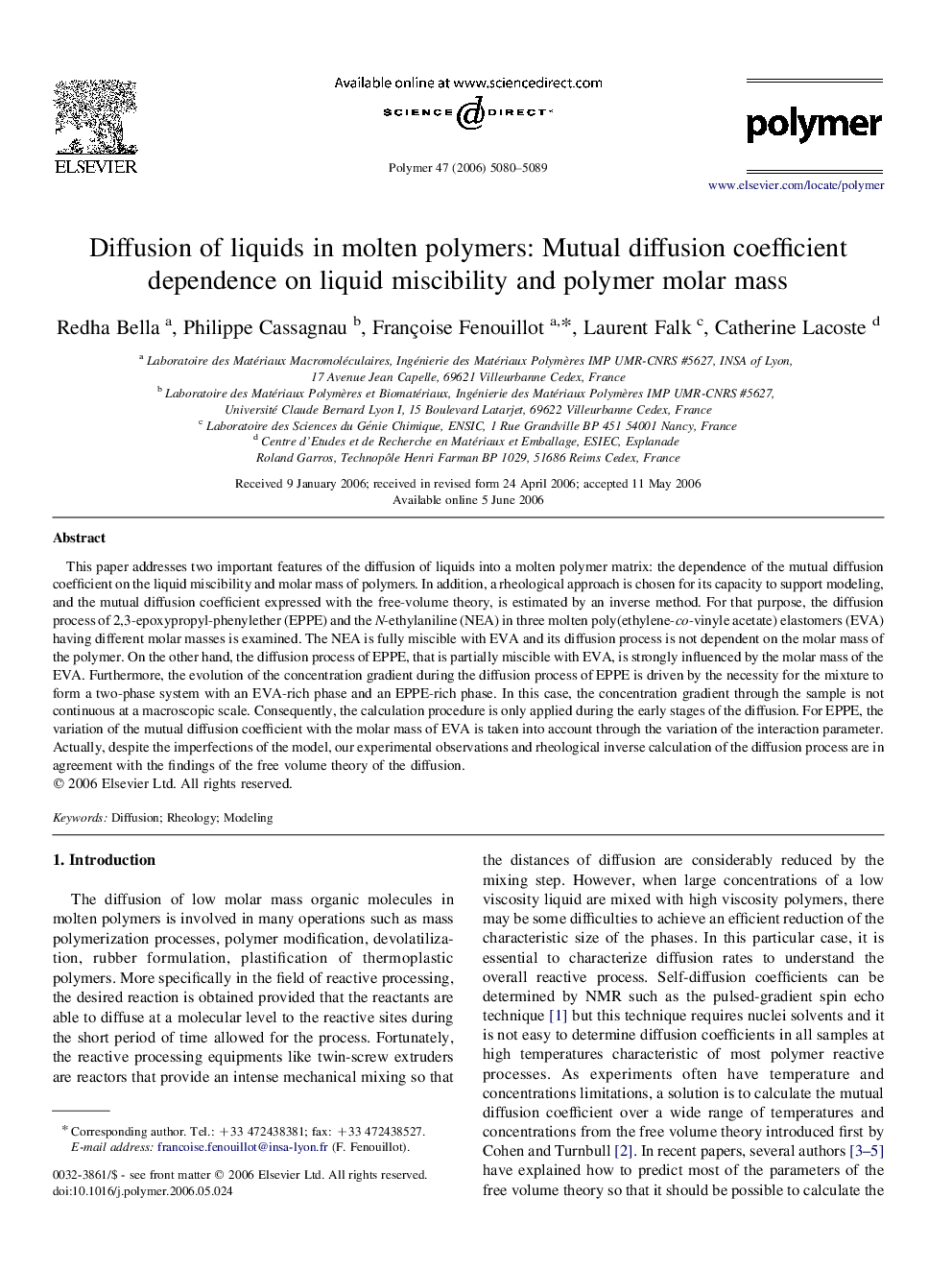| Article ID | Journal | Published Year | Pages | File Type |
|---|---|---|---|---|
| 5189375 | Polymer | 2006 | 10 Pages |
This paper addresses two important features of the diffusion of liquids into a molten polymer matrix: the dependence of the mutual diffusion coefficient on the liquid miscibility and molar mass of polymers. In addition, a rheological approach is chosen for its capacity to support modeling, and the mutual diffusion coefficient expressed with the free-volume theory, is estimated by an inverse method. For that purpose, the diffusion process of 2,3-epoxypropyl-phenylether (EPPE) and the N-ethylaniline (NEA) in three molten poly(ethylene-co-vinyle acetate) elastomers (EVA) having different molar masses is examined. The NEA is fully miscible with EVA and its diffusion process is not dependent on the molar mass of the polymer. On the other hand, the diffusion process of EPPE, that is partially miscible with EVA, is strongly influenced by the molar mass of the EVA. Furthermore, the evolution of the concentration gradient during the diffusion process of EPPE is driven by the necessity for the mixture to form a two-phase system with an EVA-rich phase and an EPPE-rich phase. In this case, the concentration gradient through the sample is not continuous at a macroscopic scale. Consequently, the calculation procedure is only applied during the early stages of the diffusion. For EPPE, the variation of the mutual diffusion coefficient with the molar mass of EVA is taken into account through the variation of the interaction parameter. Actually, despite the imperfections of the model, our experimental observations and rheological inverse calculation of the diffusion process are in agreement with the findings of the free volume theory of the diffusion.
